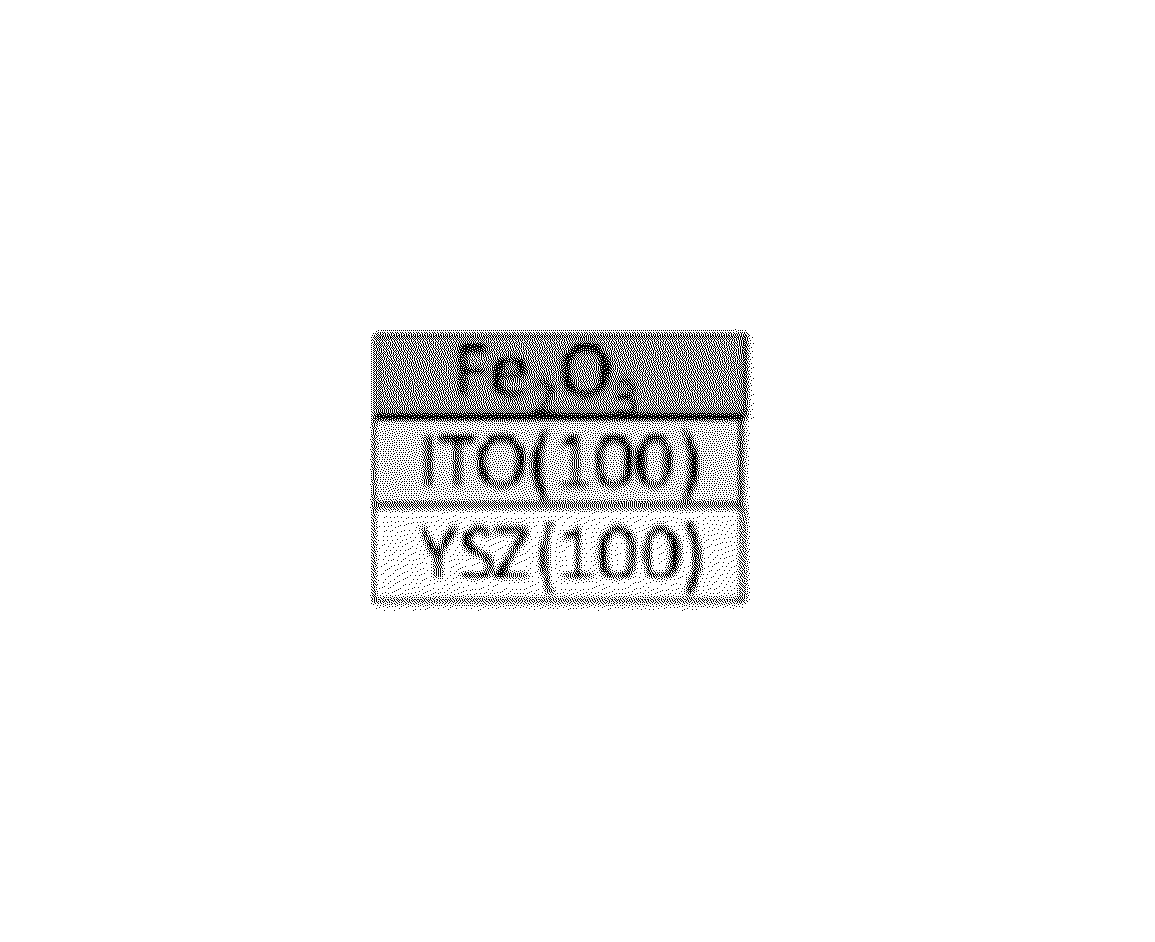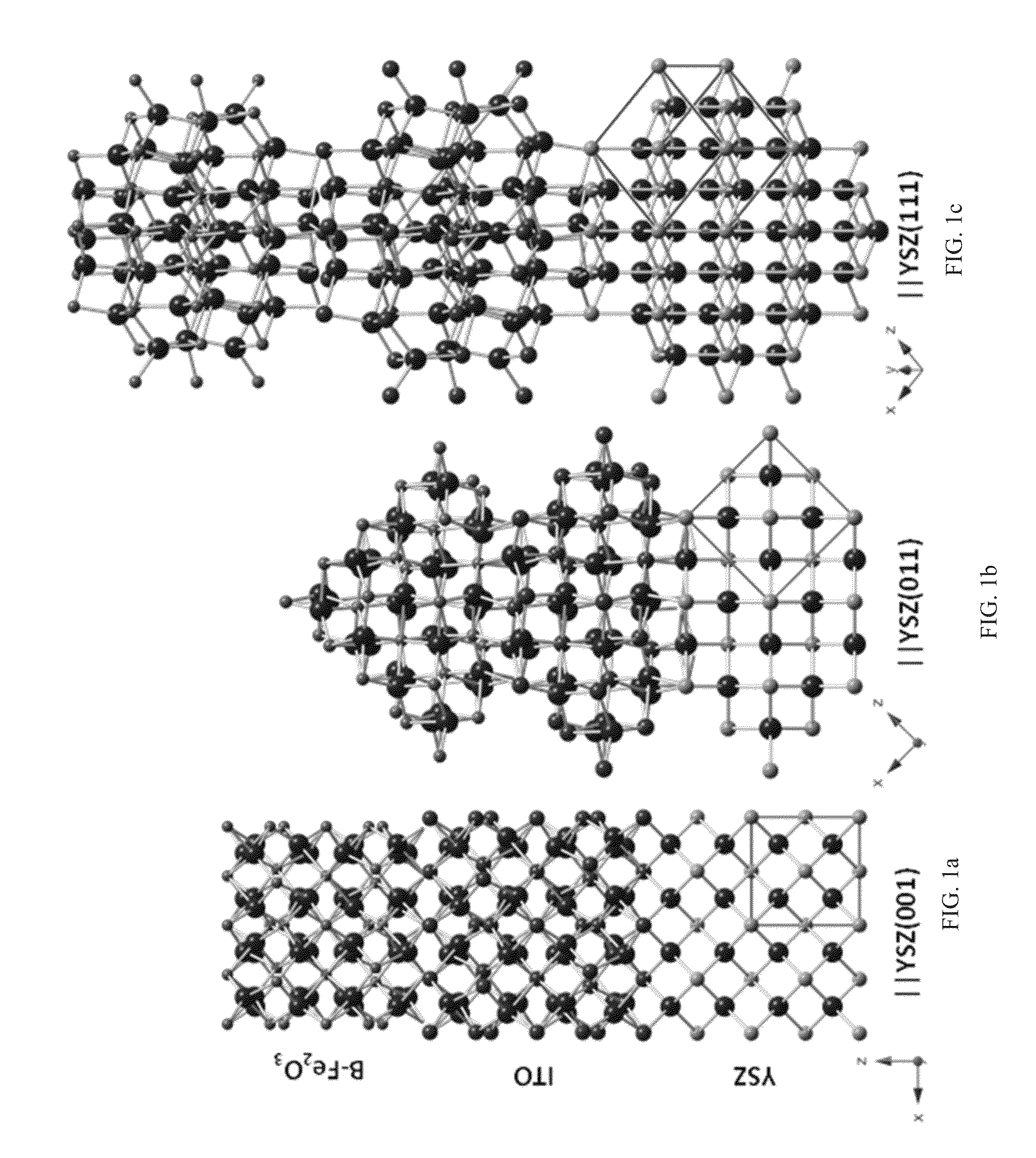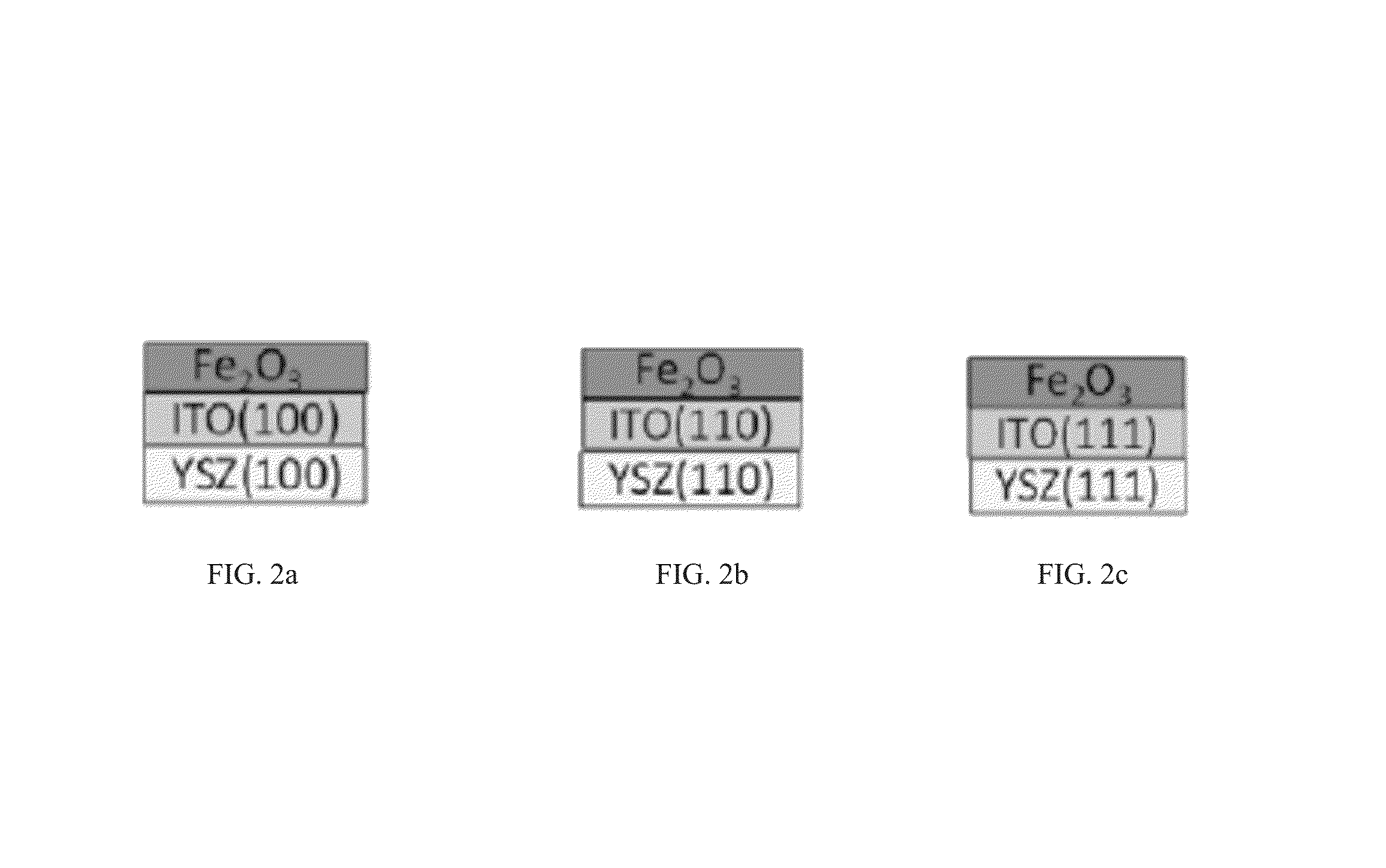Atomic layer epitaxy of hematite on indium tin oxide for application in solar energy conversion
a technology of indium tin oxide and atomic layer, applied in the direction of energy input, final product manufacture, sustainable manufacturing/processing, etc., can solve the problems of limiting factors of hematite, high recombination rate of photo-generated charge carriers, and -fe/sub>2/sub>o/sub>3 /sub>may be limited by these properties, so as to improve current densities and cathodically-
- Summary
- Abstract
- Description
- Claims
- Application Information
AI Technical Summary
Benefits of technology
Problems solved by technology
Method used
Image
Examples
example i
[0023]Single crystal YSZ(111) samples were annealed at 1100° C. in 250 sccm high-purity O2 to obtain a smooth, terraced (100 nm) surface. Samples were then sonicated in acetone, followed by isopropyl alcohol for 10 minutes each. After each sonication the substrates were dried with N2. Samples were loaded into the ALD chamber at 250° C. and allowed to thermally equilibrate for 30 minutes before a 180 s ozone (O3) clean.
[0024]ALD was performed using a Cambridge Nanotech, Inc. Savannah 200 ALD reactor. Dose duration sequences of t1-t2-t3-t4 were used, where t1 and t3 are dose times (in seconds) for the metal and ozone precursors, respectively, while t2 and t4 are the corresponding purge times. ITO was grown based on the process developed by Elam et at [14]. Cyclopentadienylindium(I) (InCp, 99.99%, Strem) and tetrakis(dimethylamido)tin (Sn(NMe2)4, 99.99%, Aldrich) were used as metal precursors during ITO growth, and ozone was provided in 5 wt % in 100 sccm high-purity O2 using a DelOzon...
example ii
[0026]Photoelectrochemical (PEC) current-voltage measurements were performed in 0.1 M KOH (pH 13.1) using a CHI10E potentiostat. Measurement were conducted using a three electrode configuration, with Ag / AgCl and Pt as reference and counter electrodes, respectively. PEC data was normalized by the sample surface area exposed to the electrolyte (0.2 cm2). The AM1.5 solar spectrum was simulated using 300 W arc lamp, calibrated to 100 mW / cm2 using a silicon photodiode.
[0027]Raman spectra were acquired over a range of 100-1000 cm−1 using a Renishaw Ramascope spectrometer equipped with a 632.8 nm He—Ne laser. Data were collected with a 50× objective lens at 100% laser power. Collection time for each spectra was 30 s.
example iii
[0028]X-ray diffraction was used to verify the phase and epitaxial relationship between the Fe2O3 and underlying cube-on-cube ITO(111)∥YSZ(111) template. FIG. 2f presents the specular scan along the YSZ[111], where qn=4π Sin (2θ / 2) / λ, where 2θ is the scattering angle. For YSZ and ITO, only allowed reflections from the {111] families are observed. For Fe2O3, no reflections from commonly observed Fe2O3 phases (α-Fe2O3, Fe3O4) are observable (FIG. 2f).
PUM
| Property | Measurement | Unit |
|---|---|---|
| temperature | aaaaa | aaaaa |
| thickness | aaaaa | aaaaa |
| thickness | aaaaa | aaaaa |
Abstract
Description
Claims
Application Information
 Login to View More
Login to View More - R&D
- Intellectual Property
- Life Sciences
- Materials
- Tech Scout
- Unparalleled Data Quality
- Higher Quality Content
- 60% Fewer Hallucinations
Browse by: Latest US Patents, China's latest patents, Technical Efficacy Thesaurus, Application Domain, Technology Topic, Popular Technical Reports.
© 2025 PatSnap. All rights reserved.Legal|Privacy policy|Modern Slavery Act Transparency Statement|Sitemap|About US| Contact US: help@patsnap.com



